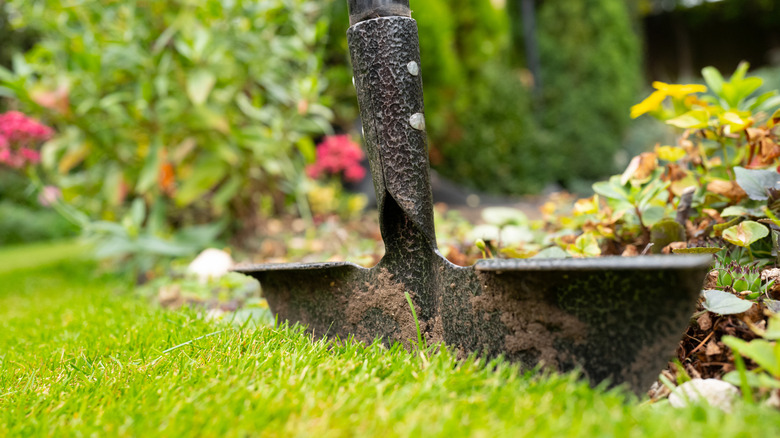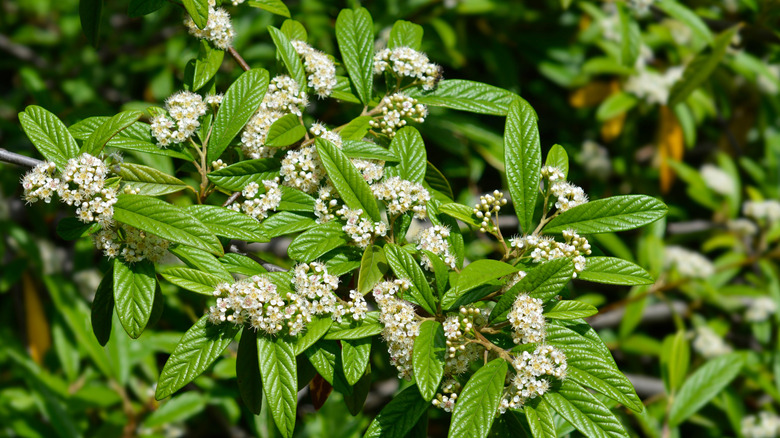The Fast-Growing Flowering Shrub That Pulls Double-Duty For Ground Cover
Ground cover is the backbone of your yard, creating a healthy environment for your prized plants to thrive. The right ground cover plant can smother weeds in your yard and garden while also protecting your soil from erosion. However, ground cover doesn't have to be all work and no fun, and this eye-catching shrub is the perfect example of that.
The Autumn Fire cotoneaster (Cotoneaster salicifolius 'Autumn Fire') is a hybrid between two cotoneaster species: Cotoneaster salicifolius and Cotoneaster dammeri. Its low-growing branches make it the perfect ground cover for your yard. It produces showy white flowers, and by winter, it's adorned in red fruit that wildlife loves. It can also be considered an evergreen shrub, a helpful groundcover for those who want to keep their yard lively year-round.
When it comes to choosing the right ground cover for your yard, certain plants work better than others due to their growing habits and behaviors. When debating whether the Autumn Fire cotoneaster is right for your yard, consider that it is drought, deer, and rabbit-resistant. Autumn Fire cotoneasters grow low to the ground, spreading out with horizontal stems. While it can grow into a notable shrub, with the right care and maintenance, it can also act as a lawn substitute. As a result, this, paired with its ability to handle partial shade (as we will discuss below), makes it perfect for shaded, wildlife-prone areas of a yard where other plants might struggle.
How to grow Autumn Fire cotoneasters in your yard
If you want to learn how to grow thriving ground cover and add Autumn Fire cotoneasters to your yard, the first step is learning about the plant's needs. This plant is only hardy in USDA zones five through nine. One of the biggest ground cover mistakes you can make is choosing a plant incompatible with your climate, so it's important to know your zone. Also, keep in mind that certain species of cotoneaster may be invasive in some regions and should not be planted, so confirm you're getting the right one. This low-growing shrub needs anywhere from full sun to light shade to survive. Along with ensuring the right light exposure each day, choose well-draining soil that's kept moist but not waterlogged. Aside from these aspects, these plants are overall easy-going, doing well in loam or sand regardless of pH. The Autumn Fire cotoneaster is known for spreading quickly. Choosing a fast-growing plant can fill your yard with greenery and color sooner, but it also means that it'll need more room to grow.
When it comes to tolerances, Autumn Fire cotoneasters hold up well to drought. They can also deter deer and rabbits, who often enjoy nibbling at ground cover. Despite being hardy in these regards, this type of cotoneaster needs extra protection from the wind if grown in a cold-weather climate. Finally, it's helpful to familiarize yourself with the conditions to which Autumn Fire cotoneasters may be susceptible. This includes brown scale and aphids, as well as fire blight, a bacterial disease often seen in fruit-producing trees.

